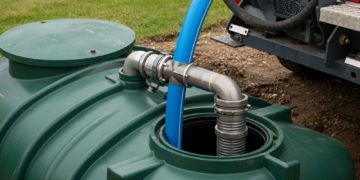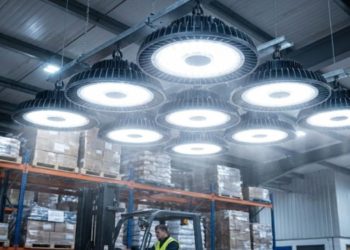It’s easy to overlook, especially in the chaos of school routines, growing shoe sizes, and changing interests. But your child’s mattress might be silently affecting more than just their sleep—it could be shaping their posture, energy levels, and even how they perform in the classroom.
Most kids won’t tell you their bed is uncomfortable. They may not even realize it. Instead, you’ll get clues: cranky mornings, complaints of soreness, or more time spent tossing and turning. That’s when it’s time to take a closer look.
When is the right time to replace a child’s mattress? What type should you consider next? And how do you balance comfort, support, and budget in a way that actually fits your growing kid’s life? Let’s break it down.
Outgrowing the Bed: It’s More Than Just Length
If your child is stretching across a mattress like a starfish with nowhere to go, that’s a clear signal. But outgrowing a bed isn’t always about size.
As children grow, their bodies require different types of support. A mattress that was fine at age six may no longer work for an eleven-year-old entering growth spurts. Weight distribution changes. Sleep patterns shift. And what once felt “just right” starts feeling all wrong.
Pay attention to the following signs:
- Complaints about waking up stiff or sore
- Difficulty falling or staying asleep
- Unusual restlessness or rolling throughout the night
- Visible sagging or lumps in the mattress
Just like shoes, mattresses that don’t fit right can interfere with healthy development. A trip to a trusted mattress store can help assess whether the current setup still meets your child’s needs—or if it’s time for an upgrade.
The Sleep Surface: Why It Matters More Than You Think
Children’s bodies are in constant motion—even when they sleep. That’s why their mattress needs to offer more than softness. It needs to support growing bones, maintain spinal alignment, and reduce pressure on joints.
Unlike adults, kids don’t have fixed sleep positions. One night they’re curled in a ball, the next they’re spread across the bed like a gymnast mid-routine. This makes versatility a key factor in choosing the right mattress.
Memory foam can work well for older kids or teens because of its pressure relief properties, while hybrid mattresses offer a balanced mix of support and responsiveness—ideal for all that nighttime shifting.
Direct Outlet Mattress Raleigh carries a range of models designed to meet these evolving needs, with options that help parents choose smart at every stage.
Don’t Be Fooled by “Kid-Specific” Marketing
Some mattresses are marketed directly to parents, using bright colors, cartoon graphics, or promises of being “just for kids.” While the aesthetic might match the theme of a child’s room, that doesn’t mean the mattress is right.
Often, these beds are thin, under-filled, or built with cheaper materials. Instead of buying based on design, focus on:
- Construction quality
- Material durability
- Certifications for safety and emissions (like CertiPUR-US)
Kids are rough on furniture. A mattress that can stand up to jumping, spills, and sleepovers is worth its weight in peace of mind.
Size Matters: Thinking Ahead
Many parents default to twin size because it saves space—but consider how long you want the new mattress to last. Upgrading to a twin XL, full, or even a queen might future-proof the bed as your child moves into adolescence.
A slightly larger mattress offers:
- More room for growth spurts
- Extra comfort for teens who lounge or study in bed
- Accommodation for sleepovers or shared sleeping with siblings
This decision also depends on bedroom size and layout, but if there’s space to spare, investing in a larger mattress can mean fewer replacements down the road.
Allergies, Cleanliness, and What You Can’t See
Children are more susceptible to allergens, and mattresses can be a magnet for dust mites and other irritants over time. If your child has seasonal allergies, eczema, or asthma, the mattress might be contributing without you realizing it.
When replacing a mattress, look for:
- Hypoallergenic materials
- Moisture-resistant covers
- Washable protectors to extend the life of the bed
These features don’t just keep the surface clean—they support overall health. Even if the mattress looks fine from the outside, years of spills, sweat, and dust can make it a hidden hotspot for irritants.
The Role of Sleep in Mental and Physical Development
It’s easy to think of sleep as a recharge button. But for kids, sleep is also a developmental accelerator. It supports:
- Memory consolidation
- Emotional regulation
- Muscle recovery and growth
- Focus and academic performance
The mattress plays a direct role in whether that sleep is restful or interrupted. A sagging or poorly constructed bed can interfere with the natural cycles of deep and REM sleep—leaving kids tired even after eight hours.
Good rest starts with a good surface. And a good mattress supports every stage of their growth, not just the hours they’re in bed.
When to Replace: General Guidelines
There’s no single rule, but most children’s mattresses need replacement every 7 to 8 years—sometimes sooner, depending on quality and use.
Keep these timelines in mind:
- Toddler to age 7: If the mattress was a crib-to-toddler conversion, it’s likely time for a full replacement.
- Ages 8–12: Growth accelerates here. If your child’s mattress is more than five years old, check for wear and sag.
- Teenagers: Support and space become priorities. Consider larger sizes and hybrid or foam options.
Shopping Tips for Parents
Before heading to a mattress store, bring these questions:
- What’s the return or exchange policy in case your child dislikes the feel?
- Is the mattress certified for low chemical emissions?
- What kind of warranty is offered?
- Does it work with your current bed frame?
And bring your child if possible. Letting them lie down, move around, and get a feel for the mattress helps them feel involved—and increases the chances they’ll actually sleep better on it.
Final Thoughts: Growing Kids Deserve Growing Support
A mattress may not be the first thing you think about when managing your child’s health and comfort—but it should be on the list. Their days are packed with movement, learning, and emotional growth. Their nights should be about real rest.
The right mattress doesn’t just support their sleep—it supports the life they’re building, one night at a time. And when it’s time for that next step, companies like Direct Outlet Mattress Raleigh can help guide you to the perfect fit—one that feels just right for the person they are now, and the one they’re becoming.











































































